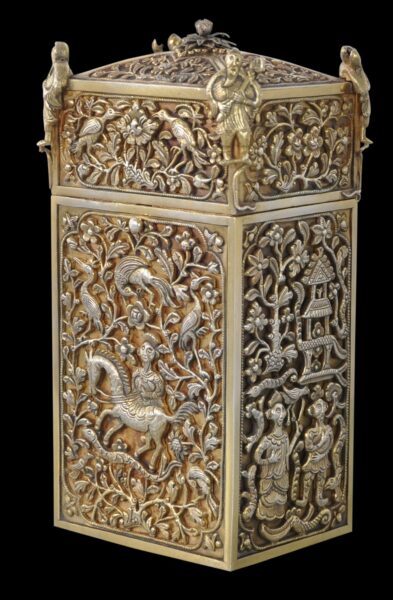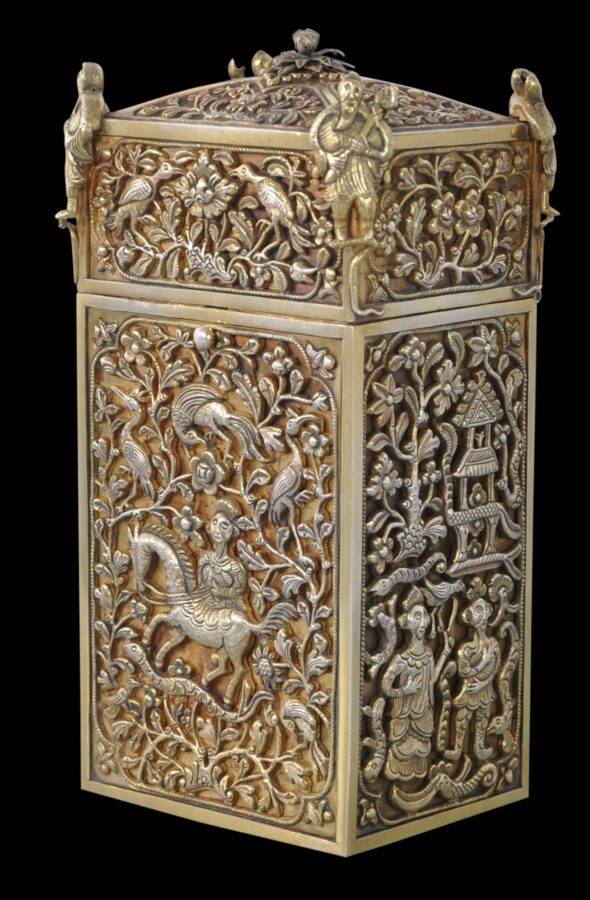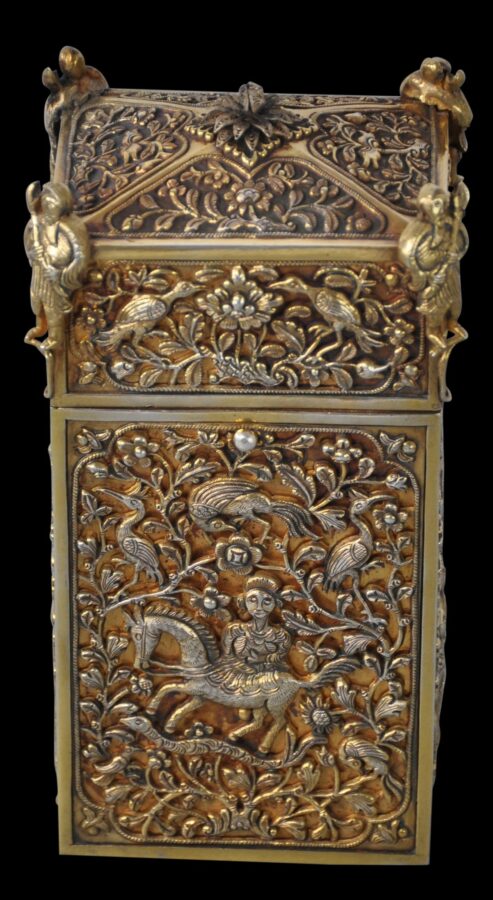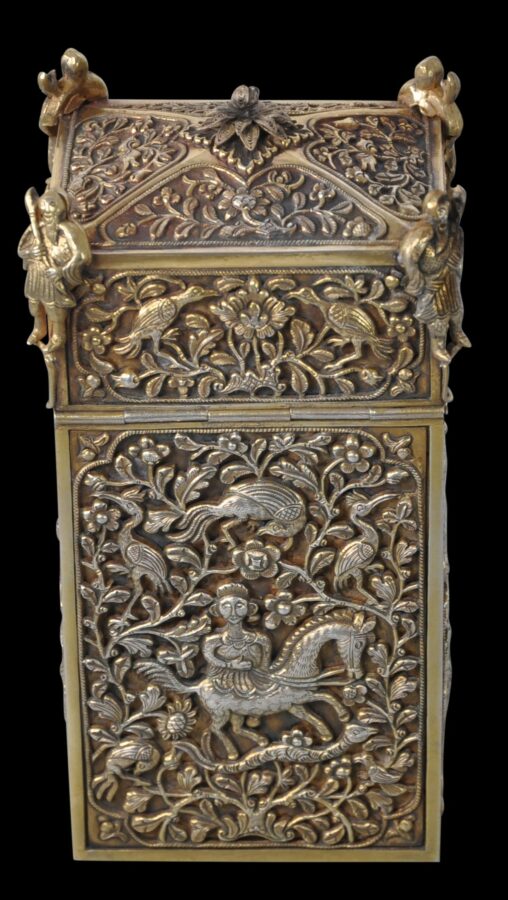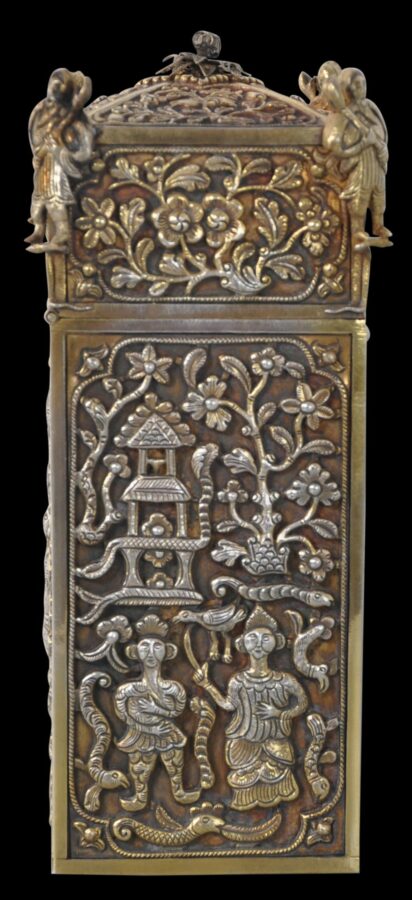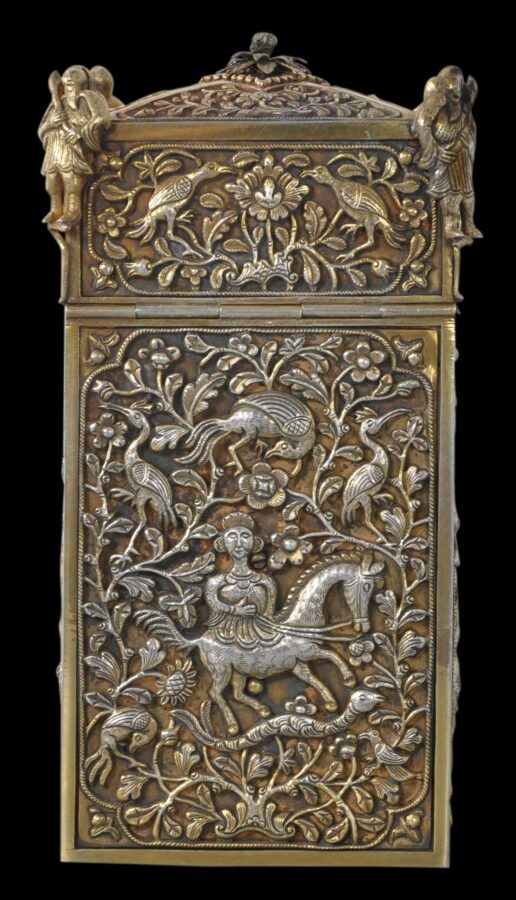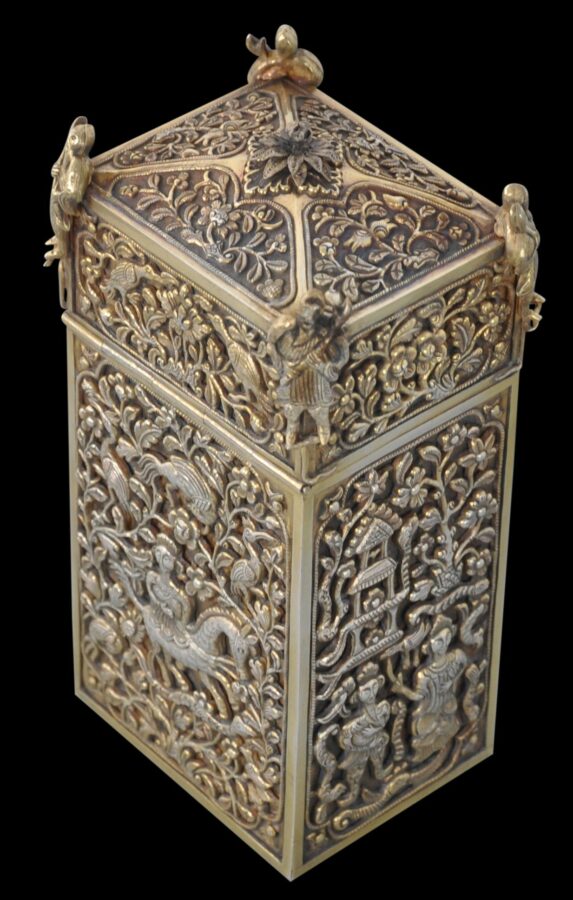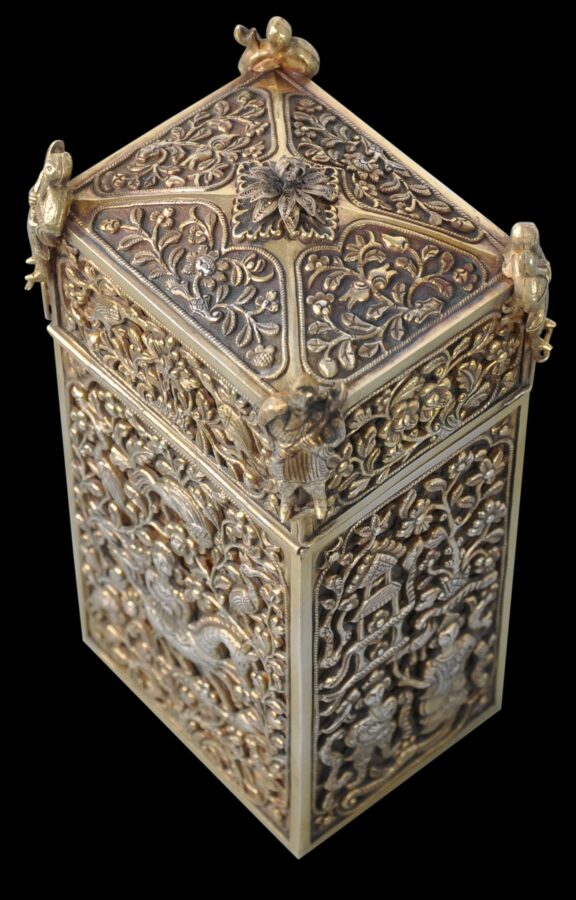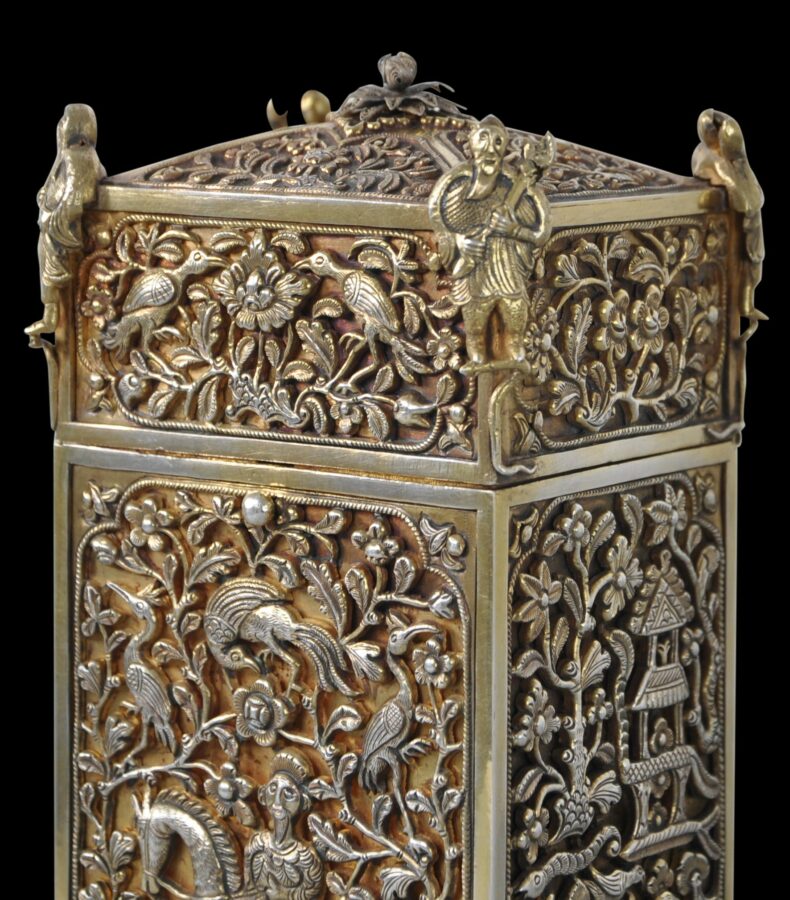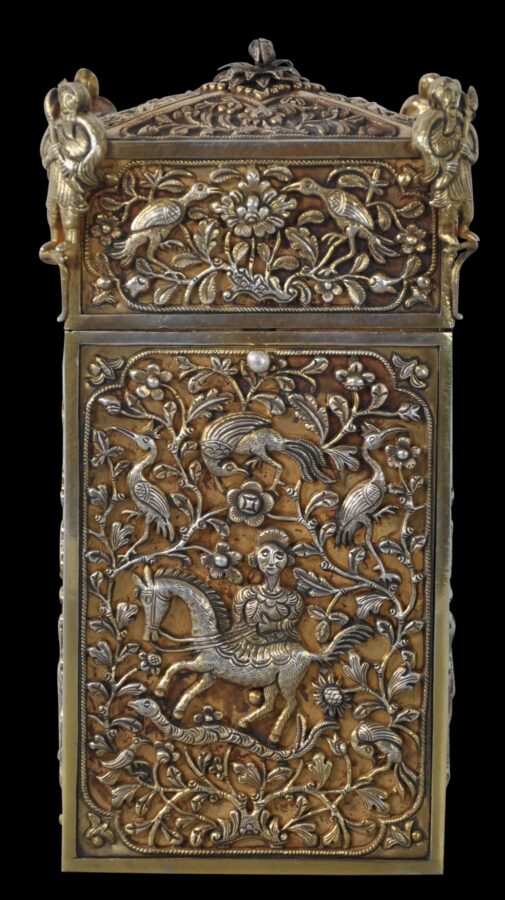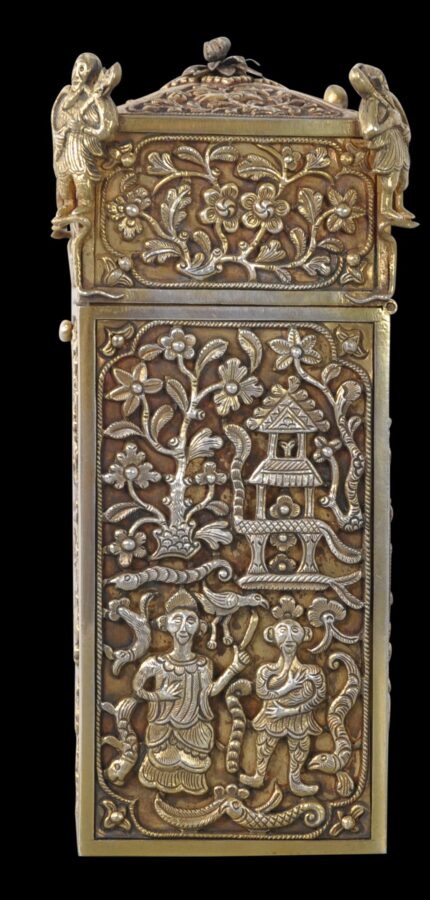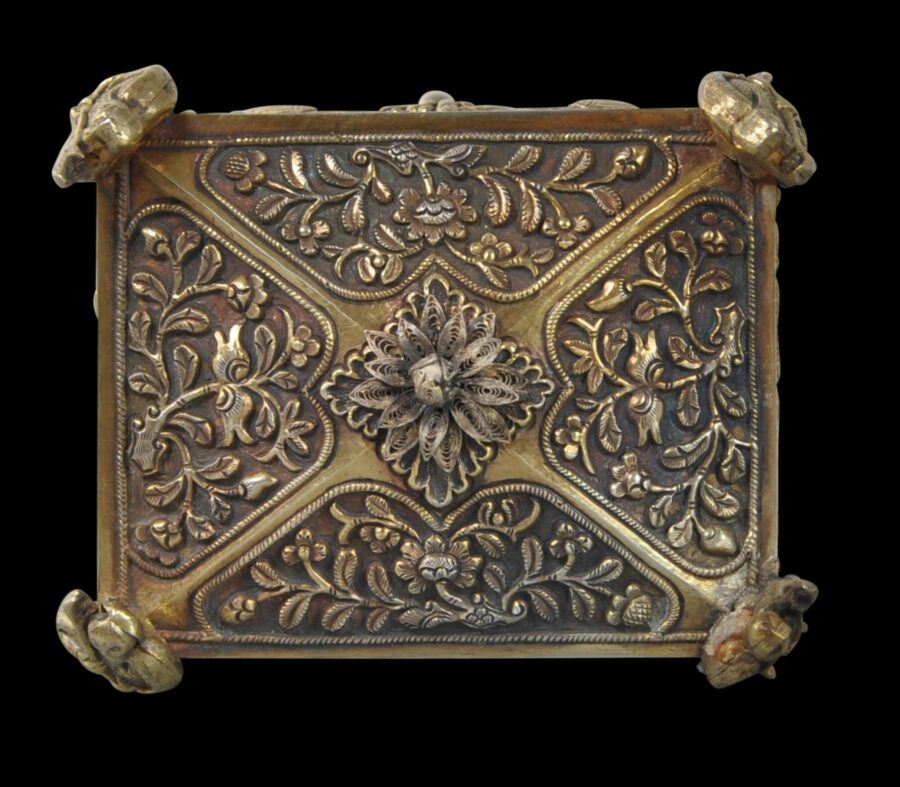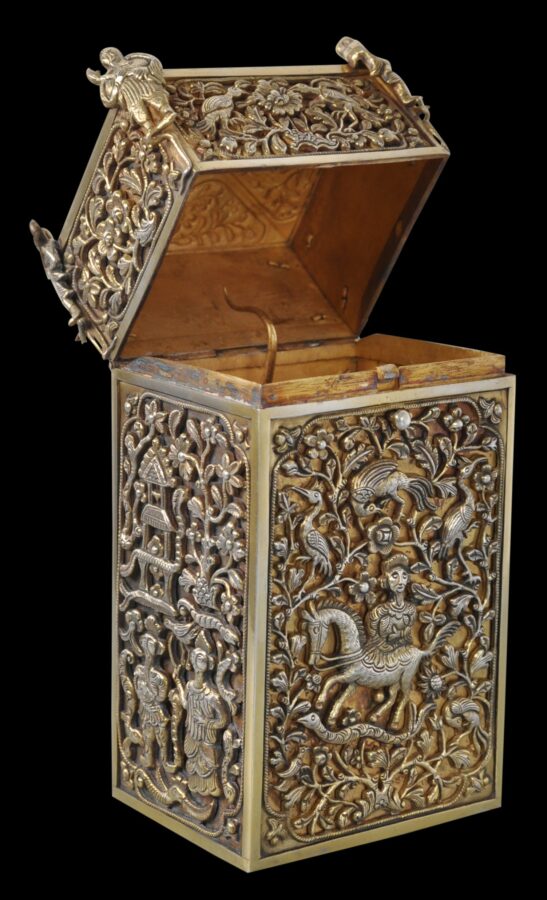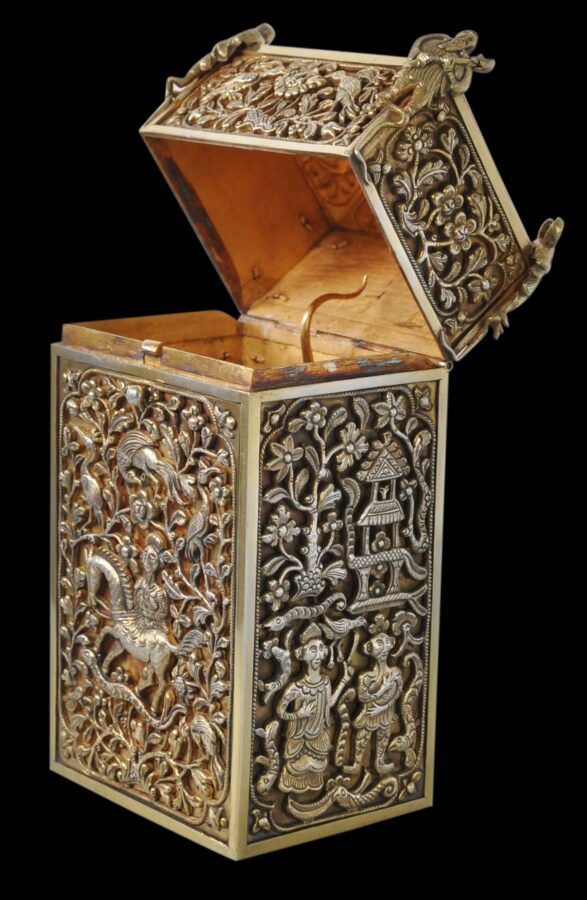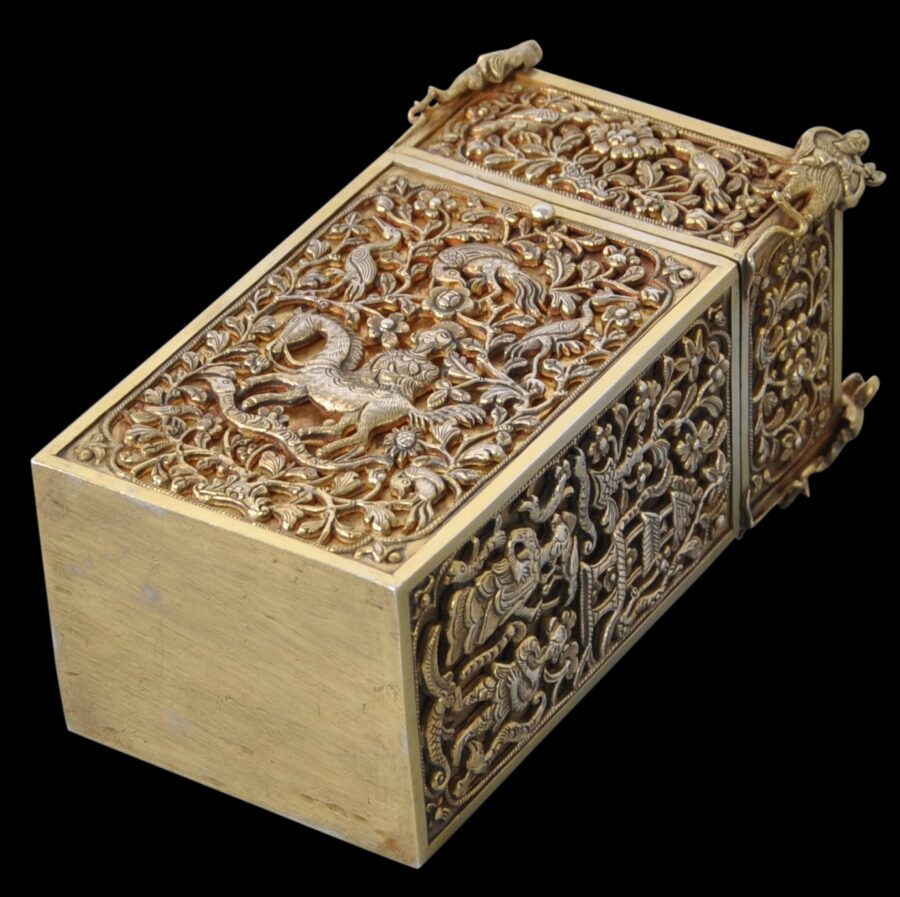This very unusual and exquisite, large, four-sided cheroot box is likely to be a rare example of silverwork produced in the small French colonial outpost of Pondicherry in India, on India’s south-east coast, and possibly Trichonopoly, further inland. The production is of particularly high quality.
The box is of gilded silver, and double-skinned with the outer layer being chased and pierced. The hinged lid is domed and terminates with a complex, gilded-silver filigree flower finial. The lid pops open when a discreet button is pushed, there being a spring mechanism inside. This all still functions very well.
The motifs on the box show European colonial figures, birds and snakes amid copious, luxuriant foliage, with Chinoiserie pavilions. Colonial figures are shown on two sides riding a horse that is trampling a snake. Snakes are shown elsewhere too. The luxuriant growth and the depiction of snakes possibly is an allusion to The Garden of Eden. Strange, solid cast almost grotesque Goliath-type figures stand guard at each corner of the cover. These have been cast separately and applied to each corner,
The Chinoiserie style is in keeping with French fashions in the 18th century for Asian-style decoration (‘chinois’ being French for ‘Chinese’).
The Chinoiserie-style motifs on this box are similar to an ivory box we had and which is now in a European museum. See that box here. That box also was attributed to Pondicherry.
Pondicherry (now known as Puducherry) became a French colonial possession in 1674 and remained do until its de facto transfer to India in 1954 and its formal transfer in 1962. Pondicherry was ruled from France and its colonial architecture developed a distinct French style. Public buildings were built with neo-classical pediments, columns, arches and gables.
Trichonopoly (Tiruchirappalli) also was under French control in the eighteenth century but that ended in 1761 when it was captured by the British.
Both cities retain a strong Christian character. Both have numerous colonial churches and mission buildings. Trichinopoly is said to have more churches than anywhere else in India. Among these are the Our Lady of Lourdes Church and the Cathedral in Melapudur, both built by the Jesuits. The Jesuits also founded St Joseph’s College in the city. Pondicherry also has many churches. It also retains an identifiable French quarter, the ‘Ville Blanche’ or ‘White Town’. Even to this day, locals still can be seen playing the popular French outdoor game of boules in public spaces.
Silverwork from Pondicherry and Trichonopoly is comparatively rare. When it does appear typically it is of very fine quality, often incorporates fine foliage and floral detail with Christian motifs, and gilding or parcel gilding.
The example here is among the best that we have seen. It is in excellent condition, and the gilding has developed a pleasing softness and hue with age.


